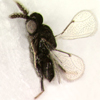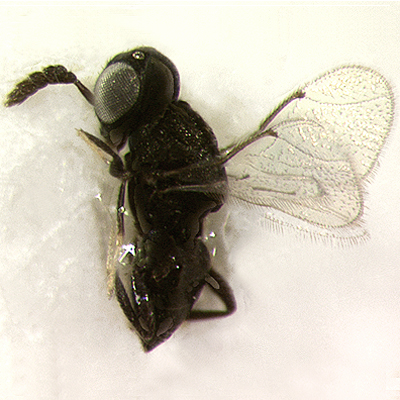 |
|||||||||||||||||||||||||||||||||||||||||||||||||||||||||||||||||||||||||||||||||||||||||||||||
|
|
Home | Open the Key | References | ||||||||||||||||||||||||||||||||||||||||||||||||||||||||||||||||||||||||||||||||||||||||||||
|
|||||||||||||||||||||||||||||||||||||||||||||||||||||||||||||||||||||||||||||||||||||||||||||||
Classification
|
|||||||||||||||||||||||||||||||||||||||||||||||||||||||||||||||||||||||||||||||||||||||||||||||
Subfamily Tribe |
Entedonini |
||||||||||||||||||||||||||||||||||||||||||||||||||||||||||||||||||||||||||||||||||||||||||||||
Diagnosis
|
|||||||||||||||||||||||||||||||||||||||||||||||||||||||||||||||||||||||||||||||||||||||||||||||
|
|
||||||||||||||||||||||||||||||||||||||||||||||||||||||||||||||||||||||||||||||||||||||||||||||
| |
|||||||||||||||||||||||||||||||||||||||||||||||||||||||||||||||||||||||||||||||||||||||||||||||
Distribution |
|||||||||||||||||||||||||||||||||||||||||||||||||||||||||||||||||||||||||||||||||||||||||||||||
|
This new genus has been recognised only in the Neotropical Region (Noyes, 2001). |
|||||||||||||||||||||||||||||||||||||||||||||||||||||||||||||||||||||||||||||||||||||||||||||||
| |
|||||||||||||||||||||||||||||||||||||||||||||||||||||||||||||||||||||||||||||||||||||||||||||||
Biology |
|||||||||||||||||||||||||||||||||||||||||||||||||||||||||||||||||||||||||||||||||||||||||||||||
|
T. agromyzae Delvare & La Salle, the only species described by now, is a larval parasitoid of leafminers belonging to the genera Liriomyza Mik, Calycomyza Hendel and Ophiomyia Brazhnikov (Agromyzidae) (Noyes, 2001). |
|||||||||||||||||||||||||||||||||||||||||||||||||||||||||||||||||||||||||||||||||||||||||||||||
| |
|||||||||||||||||||||||||||||||||||||||||||||||||||||||||||||||||||||||||||||||||||||||||||||||
| |
|||||||||||||||||||||||||||||||||||||||||||||||||||||||||||||||||||||||||||||||||||||||||||||||
Comments |
|||||||||||||||||||||||||||||||||||||||||||||||||||||||||||||||||||||||||||||||||||||||||||||||
|
Trisecodes is the only eulophid
genus with tarsi 3-segmented. Up to its discovery and description,
the only Hymenoptera known to have 3-segmented tarsi in both sexes
were members of the family Trichogrammatidae. However, many of
the derived states found in Trisecodes are found in some
eulophids, for example the shape
and placement of the frontal sutures, the reduced number of tarsal
segments, the reduced number of setae on the submarginal vein,
the very short postmarginal vein, and the presence of line of
hairs on the forewing. The fore tibial spur is also similar to
the spur present among eulophids.
Moreover, some characters, as reduced number in antennal segments,
special structure of the fore tibial spur and petiolate gaster
with phragma restricted to mesosoma and not entering metasoma,
are definitely characters recognizable in the family Eulophidae.
Finally, all the trichogrammatids are egg parasitoids of several
insects, while Eulophidae (as Trisecodes)
include many larval or/and pupal parasitoids of agromyzid leafminers.
Therefore, thanks to all the reasons above reported, Delvare
and La Salle (2000) placed Trisecodes as a member
of the family Eulophidae, instead
of putting it among trichogrammatids. It seemed also reasonable
placed Trisecodes, considering the currently recognized
subfamilies, within Entedoninae
by the combination of two characters: frontal suture clearly separated
from anterior ocellus and V-shaped, and lines of setae from stigmal
vein. Those characters are in fact present in Asecodes,
which thus could be closely related to Trisecodes. However,
Trisecodes doesn’t have many typical characters
usually reported for Entedoninae
(see Boucek, 1988; Schauff,
1991), as the scutellum with a pair of setae, submarginal
vein with 2 setae, male scape with sensory pores at the ventral
edge, propodeum with a subspiracular tubercle; it has in fact
3 pairs of small setae on scutellum, a single seta on submarginal
vein, notauli complete and doesn’t have a tubercle on propodeum
and sensory pores on male scape.
Finally, the combination of the 3-segmented tarsi and the condition of head and thorax definitely separate this genus from all the others included in the key. |
|||||||||||||||||||||||||||||||||||||||||||||||||||||||||||||||||||||||||||||||||||||||||||||||


